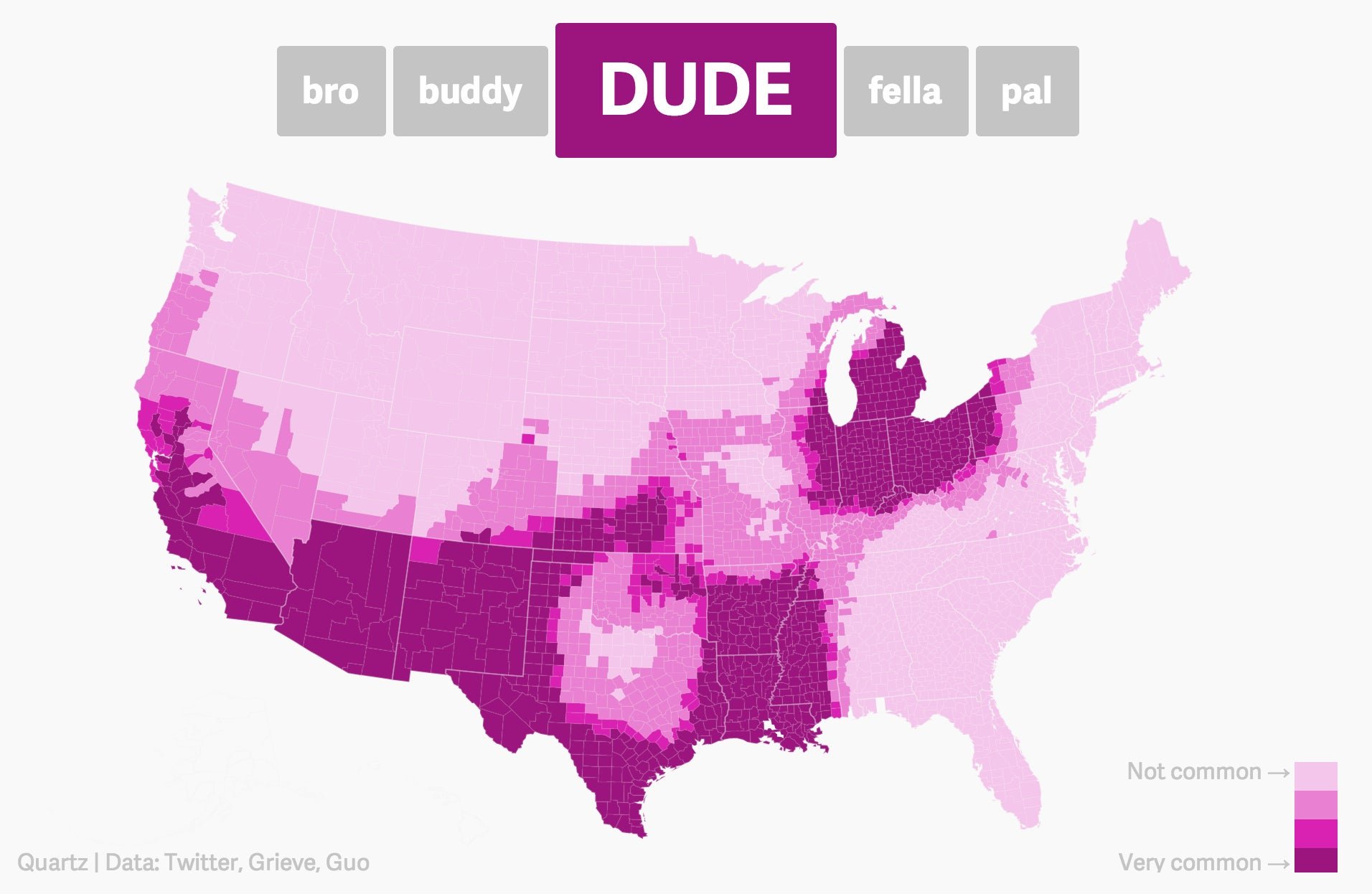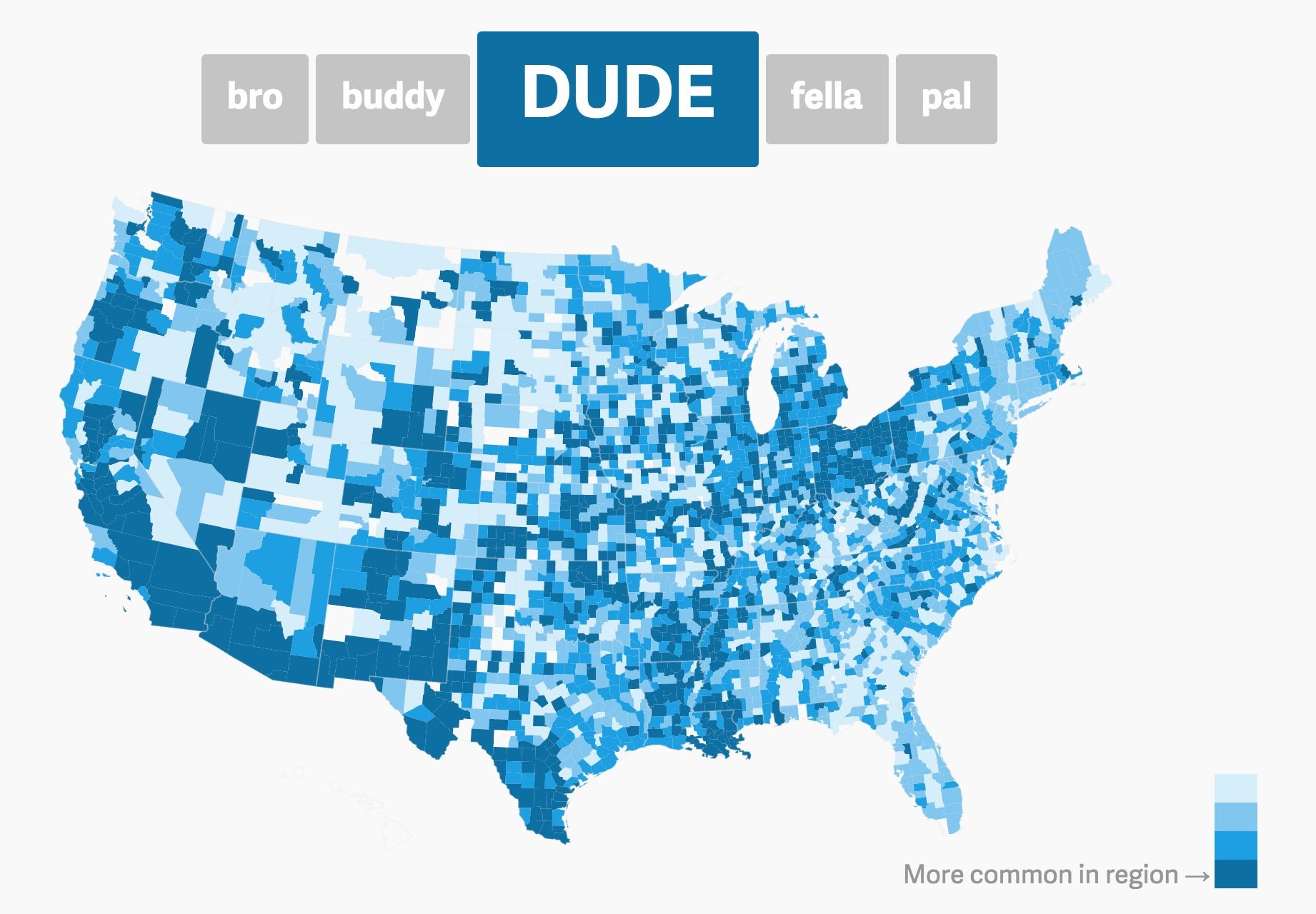The dude map: How Americans refer to their bros
“It seems safe to report that dude has supplanted totally as the word most often uttered by American youth,” claimed Richard Hill in his 1994 paper on the history of the word “dude.”


“It seems safe to report that dude has supplanted totally as the word most often uttered by American youth,” claimed Richard Hill in his 1994 paper on the history of the word “dude.”
That might be true, but as it turns out, “dude” is more popular in some parts of the United States than others. In other areas of the country, people say “pal,” “buddy,” and other colloquial vocatives—nouns that usually refer to a person.
The map above shows the geographical concentration of a few such words. If you click the buttons, you’ll notice that “dude” is the most widespread. Others are heavily concentrated in particular regions, like “pal” in the north.
When Hill wrote his history of “dude,” understanding such trends in slang was close to impossible. There simply weren’t enough data. Not so today. To uncover the hidden shape of vocative use, linguists can draw on one of the best datasets the English language has ever had: Twitter.
Forensic linguist Jack Grieve has been working with several billion tweets, collected by Diansheng Guo of the University of South Carolina, to analyze the geography of language using location data attached to the tweets. Quartz asked Grieve to take a look at ”dude” and its bros.
To generate the maps, Grieve first searched for occurrences of these words in the dataset. Once he identified word uses and their locations, he used hot-spot testing, a common technique in spatial analysis. It uncovers geographic trends in data by clustering together nearby areas with similar results.
Tweets are first adjusted by the population of the counties from which they were sent. Then, the frequency of tweets for a given county is compared to nearby counties. If a county uses “bro” frequently, for example, and so do several of those around it, it gets a high score. The word would then be shown in deep purple on our map, meaning it is “very common” in that area. (Our article on the usage of “um” and “uh” in the US goes into more detail on hot-spot testing.)
As Grieve noted in conversations with Quartz, the trends for these words are pretty clear even before hot-spot testing. Here is the raw data for “dude,” before the data went through the smoothing algorithm. The concentrations in the southwest and midwest are still easy to see.

There are a couple caveats. First is the absence of “man.” It might well be the most common of these words, but it can’t be meaningfully included because of its widespread use in other contexts.
It’s also worth noting that the words above are used primarily by white men. The fact that there are so few useful and innocent vocatives for women and people of color indicates biases both in our data and in the English language itself.
“Fella” and “pal” look to be on their way out. Even ”dude” wasn’t always the top vocative. Any ideas on what might replace it?